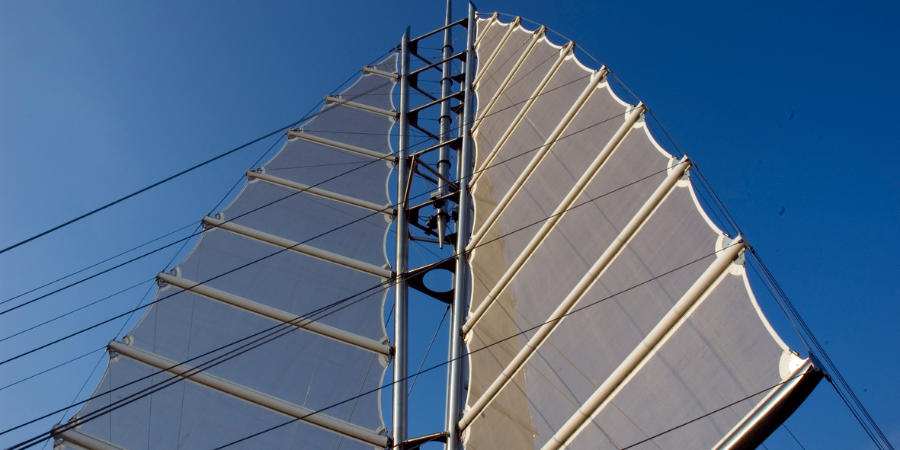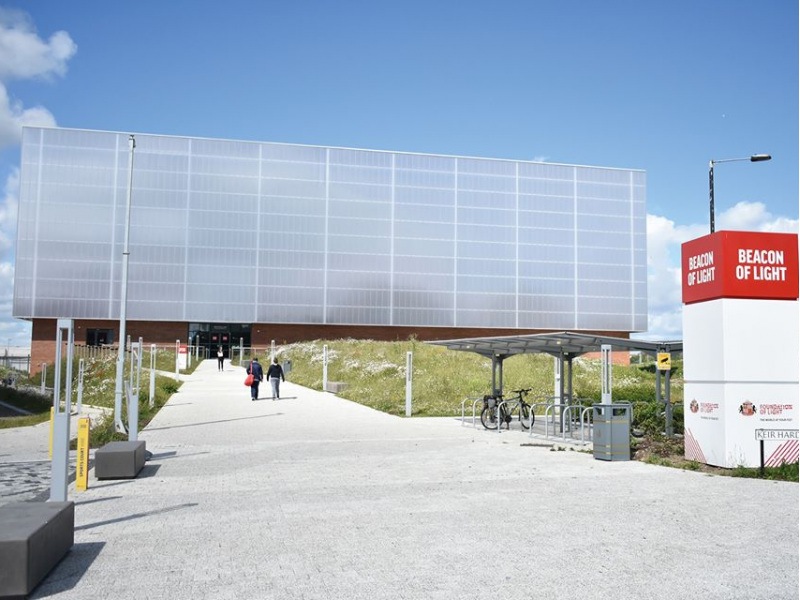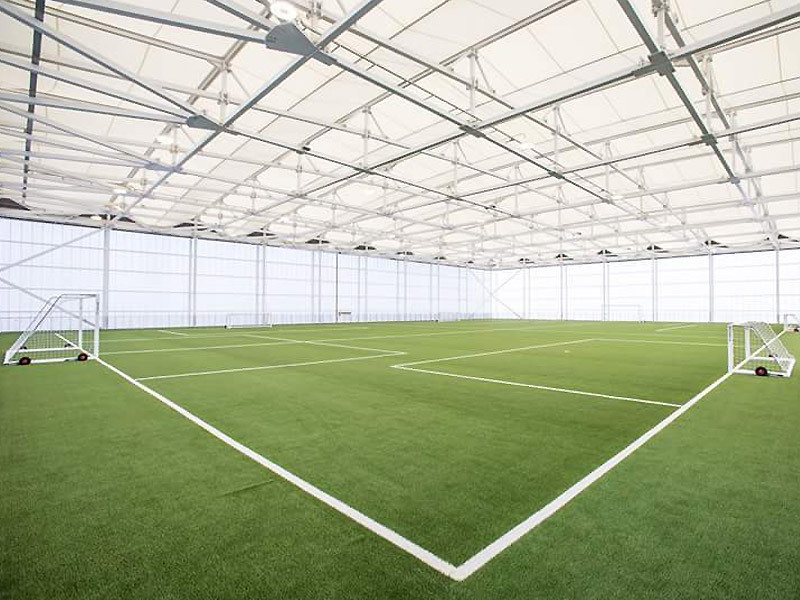
Exploring Different Membrane Materials in Tensile Fabric Structures
20 Jun 23Tensile fabric structures have revolutionised the world of architecture and design, offering a blend of beauty, functionality, and sustainability. These structures rely on tensioned fabric membranes to create stunning and versatile spaces. One of the key factors influencing their performance and durability is the choice of materials. In this blog post, we will delve into the different materials commonly used in tensile fabric structures, highlighting their unique characteristics and benefits.

PVC-Acrylic
When it comes to tensile fabric structures, the choice of membrane material plays a critical role in both functionality and aesthetics. One such material that has gained popularity is PVC acrylic, often used for sports facilities, industrial structures, and event structures. This composite material, combining the best of PVC (polyvinyl chloride) and acrylic lacquer, offers a range of benefits that enhance the durability and visual appeal of tensile fabric structures.
PVC acrylic membranes are constructed by lacquering a PVC base fabric with an acrylic layer. This combination harnesses the strengths of both materials to create a versatile and high-performance membrane for tensile fabric structures, which has a lifespan of up to 20 years. PVC provides exceptional tensile strength, tear resistance, and fire retardancy, while the acrylic coating enhances UV resistance and colour retention.
PVC-PVDF
Primarily used for roofs and architectural projects due to its long life span of 20+ years, PVC-polyvinylidene fluoride (PVDF) membranes offer exceptional durability and weather resistance. PVDF is known for its excellent chemical resistance and colour retention properties, making it suitable for long-lasting architectural applications. PVC-PVDF membranes have high tensile strength, excellent UV resistance, and self-cleaning capabilities. These membranes are often used in structures requiring high performance, such as roofs, façades and large-scale canopies.
One of the key advantages of PVC membranes is their recyclability. At the end of their life cycle, these membranes can be collected, processed, and transformed into new materials or products. Recycling these membranes helps reduce waste generation, conserve resources, and minimise the environmental impact associated with traditional disposal methods.
Silicone Glass
Silicone glass membranes are a popular choice for their exceptional translucency and choice of colour. The fabric is coated with a transparent silicone material that provides excellent UV resistance and durability. Silicone glass membranes are lightweight, yet strong and flexible, making them suitable for applications that require maximum translucency, such as canopies and walkways. By incorporating silicone glass membranes, canopies and walkways can offer protection from the elements while maintaining a sense of openness and transparency.
Silicone glass membranes offer a unique advantage over other materials in that they can be customised with a wide range of colours. This flexibility allows designers to unleash their creativity and bring their visions to life by incorporating vibrant hues, subtle tones, or even patterns into their architectural designs. By customising silicone glass membranes, tensile fabric structures can become captivating works of art that harmonise with their surroundings and evoke specific emotions.
PTFE Glass
Polytetrafluoroethylene (PTFE) glass membranes offer unmatched durability, versatility, and light transmission. These membranes consist of woven fibreglass coated with a PTFE layer, creating a highly durable and weather-resistant material. PTFE glass membranes are known for their self-cleaning properties, exceptional UV resistance, and flame retardancy. They are commonly used in iconic structures like stadiums, airports, and architectural canopies, where large spans and impressive aesthetics are desired.
When it comes to long-lasting and durable materials for tensile fabric structures, PTFE glass membranes stand out as an exceptional choice. With their unique properties and engineering, PTFE glass membranes offer an impressive lifespan of 30+ years, making them a reliable solution for architectural projects.
PVC-Glass
Ideal for internal use, particularly to create solar shading, PVC-glass membranes consist of a PVC-coated glass fibre fabric. They also provide excellent tensile strength and fire resistance, while allowing natural light to enter the space. PVC-glass membranes are often used in atrium roofs, skylights, and facades, creating a visually stunning and well-protected environment.
Glare occurs when the intensity of light surpasses the eye's ability to adapt, resulting in visual discomfort and reduced visibility. PVC-glass membranes are specifically designed to minimise glare, making them an ideal choice for applications where precise light control is required. By diffusing sunlight and reducing its intensity, these membranes help create glare-free environments, ensuring optimal visual comfort for occupants.
Working with J & J Carter
The choice of membrane material is a crucial consideration in the design and construction of tensile fabric structures. PVC-acrylic, PVC-PVDF, silicone glass, PTFE glass, and PVC glass offer a wide range of characteristics and benefits, including durability, weather resistance, transparency, UV resistance, and fire retardancy. Architects and designers can leverage these materials to create remarkable structures that combine functionality, aesthetics, and performance.
If you’re looking to add a tensile fabric architecture or tension fabric structure as part of a project, J & J Carter is here to help. We have the expertise to design and manufacture bespoke solutions specific to your individual requirements and provide an efficient installation service. Contact us today to discuss your fabric architecture project.


